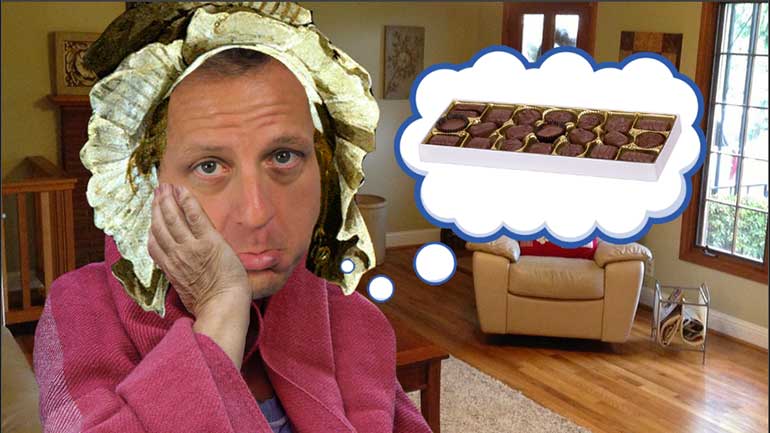ShmoopTube
Where Monty Python meets your 10th grade teacher.
Search Thousands of Shmoop Videos
Modern World History 3.1 Oh, to Industrialize in England 144 Views
Share It!
Description:
Sure, we owe the conveniences of modern life to the Industrial Revolution, but it still had its fair share of problems.
Transcript
- 00:04
While we credit the Industrial Revolution with finally shoving our world into the beautiful neon glow of modernity,
- 00:10
it wasn't all fuzzy kittens and unicorns with rainbow tails.
- 00:14
Let's break it down.
- 00:15
The Industrial Revolution first
- 00:16
revved its engine in England in 1775.
Full Transcript
- 00:19
That was the year a Scottish mechanical engineer named
- 00:22
James Watt took Thomas Newcomen's
- 00:24
1712 version of the steam engine,
- 00:27
fiddled with the separate condenser, switched the machine over to rotary motion, and...
- 00:32
Voila. Life got easier for a whole lot of people.
- 00:35
For the first time, products, like clothing, were being turned out in mass quantities.
- 00:39
Imagine: no more flipping your dirty tighty-whities inside out so you could get another day's wear out of them.
- 00:44
Unless you're lazy, well then, keep on keeping on.
- 00:46
Building materials were also abruptly in abundance,
- 00:49
thanks to the inventor Henry Bessemer.
- 00:52
The Bessemer process involved blowing air through iron to create steel. Lots and lots and lots of steel.
- 00:58
This enabled businessmen to construct everything from skyscrapers to Superman.
- 01:03
And how did the folks of this era get in touch with one another to talk about the very latest whatchamacallits and doohickeys?
- 01:09
Not with letters. Those were so 1836.
- 01:12
Instead, people turned to portrait-painter Samuel Morse,
- 01:16
who is less known today for his artwork than he is
- 01:18
for Morse code and the single-wire telegraph system.
- 01:22
And fun fact:
- 01:23
Thomas Edison, who would go on to invent pretty much
- 01:26
everything, except alternating current, got his start as a telegraph operator.
- 01:30
So, yeah, life was good.
- 01:31
Ships didn't have to wait on the wind anymore
- 01:33
to get from Point A to Point B.
- 01:35
Travelers could take trains instead of horses to their destination.
- 01:39
Farmhands had the option of leaving the fields where they'd worked for pennies a day,
- 01:43
to work in a factory for...pennies a day.
- 01:46
But not every invention produced during the Industrial Revolution was pure magic for everyone involved.
- 01:52
Take Eli Whitney's cotton gin.
- 01:54
Sure, this 1793 product of mechanical genius made the
- 01:58
mass production of cotton, and therefore clothing, possible.
- 02:02
However, the cotton gin also expanded slavery in the American South.
- 02:06
Planters wanted to make more money, which meant they needed to grow more cotton lickety-split, which meant they needed more slaves to plant and pick in the fields.
- 02:14
Stellar job there, Eli.
- 02:16
Furthermore, the marvelous machines of the Industrial Revolution couldn't prevent major societal upheaval.
- 02:21
For example, factory conditions were bad and often downright dangerous.
- 02:26
As cities grew more and more crowded, the lack of sanitation sparked frequent and deadly epidemics.
- 02:32
Families came apart at the seams as parents died or were forced to work endless hours on factory floors to make ends meet.
- 02:39
We owe the conveniences of modern life to the Industrial Revolution.
- 02:42
Seriously, there are cities in this country that couldn't function without air conditioning.
- 02:46
But the Industrial Revolution, awesome as it was, had its fair share of problems, some of which are still hanging around.
- 02:52
Here's looking at you, climate change. Here's looking at you.
Up Next
GED Social Studies 1.1 Civics and Government
Related Videos
When you're about to marry the love of your life, not many things could stop you. However, finding out that your future hubby is keeping his crazy...
Here at Shmoop, we work for kids, not just the bottom line. Founded by David Siminoff and his wife Ellen Siminoff, Shmoop was originally conceived...
ACT Math: Elementary Algebra Drill 4, Problem 5. What is the solution to the problem shown?




